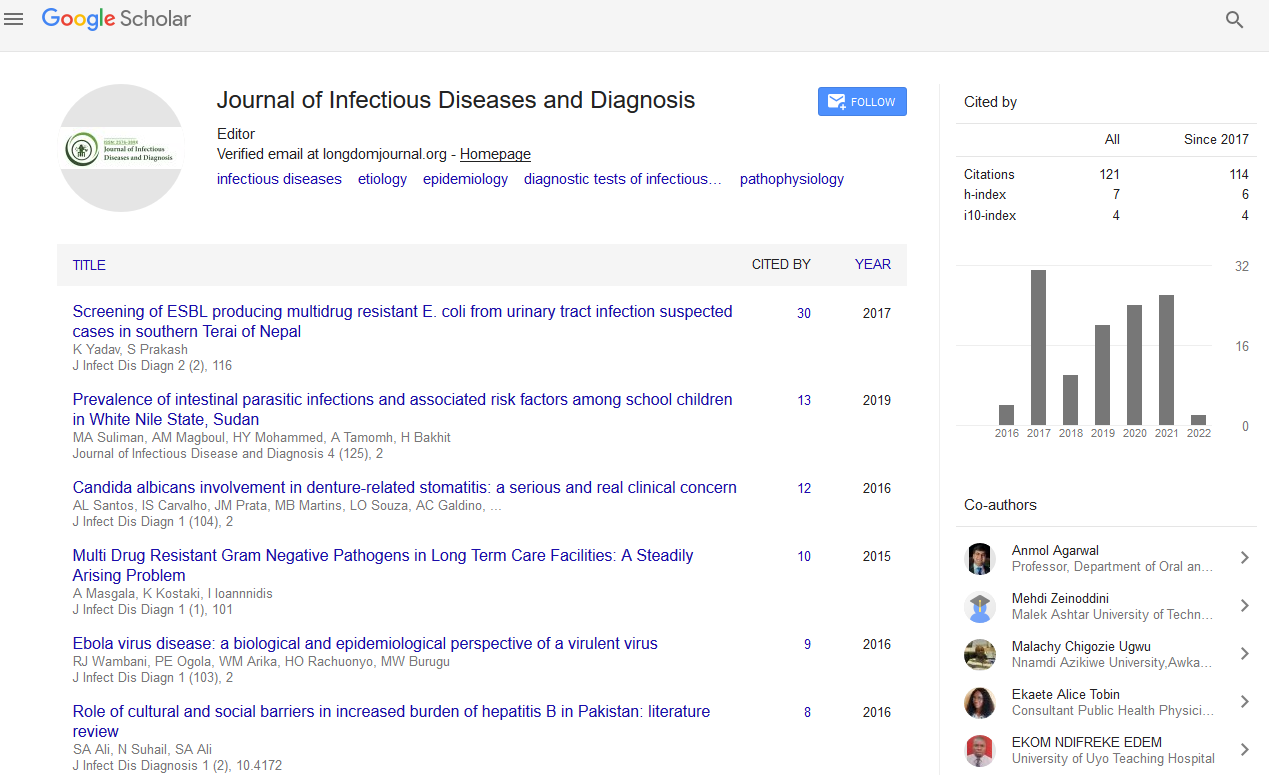Indexed In
- RefSeek
- Hamdard University
- EBSCO A-Z
- Publons
- Euro Pub
- Google Scholar
Useful Links
Share This Page
Journal Flyer

Open Access Journals
- Agri and Aquaculture
- Biochemistry
- Bioinformatics & Systems Biology
- Business & Management
- Chemistry
- Clinical Sciences
- Engineering
- Food & Nutrition
- General Science
- Genetics & Molecular Biology
- Immunology & Microbiology
- Medical Sciences
- Neuroscience & Psychology
- Nursing & Health Care
- Pharmaceutical Sciences
Abstract
Induction of Anti-inflammatory Cytokines in CD11b- and Gr-1- Positive Cells after Neuropathogenic Coronaviral Infection
Masatoshi Kakizaki, Akira Togayachi and Rihito Watanabe
Mu-3 virus (Mu-3), a neuropathogenic strain of the mouse hepatitis virus, induces the apoptosis of pyramidal neurons in CA2 and CA3 subregions of the hippocampus at 4 days post-inoculation (dpi), without showing destructive changes or viral invasion there at 3 dpi. Since it has been considered that the apoptotic lesions occur through the indirect effects of infection, local expression of cytokines was examined in the brain in our previous study, revealing that the anti-inflammatory cytokine IL-10 is produced by pyramidal neurons of CA2 and CA3 after infection. However, infection of primary brain culture failed to elevate IL-10 production. Therefore, in order to examine whether Mu-3 infection elevates IL-10 production, CD11b-expressing Peritoneal Exudate Cells (PECs) were used, which showed an increased level of IL-10 production in the supernatant of PEC culture after infection. The finding that IL-10-producing cells expressed Lewis X (Lex) supports our previous hypothesis that Lex expression is involved in the immunosuppressive state induced by viral infection. In addition, in combination with an experiment involving ex vivo infection, it was indicated that Mu-3 elicits M2 macrophages or Gr-1+CD11b+ Myeloid- Derived Suppressor Cells (MDSCs) that produce IL-10 and TGF-β to circumvent the host immune response after infection.


